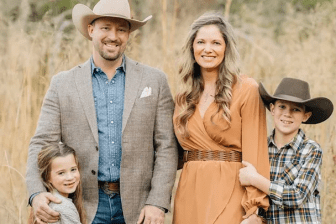OTTAWA – Canada’s trade minister says the rise of “ugly” partisan politics and anti-globalization forces together pose a threat to the world not seen since the Great Depression.

Chrystia Freeland offered up that scathing analysis in her testimony today before the Senate trade committee.
It came one day after Donald Trump‘s renewed vow to pull the United States out of the controversial 12-country Trans-Pacific Partnership.
Earlier today, Freeland said the TPP can’t go ahead without the U.S.
READ MORE: Trump’s threat to pull plug on TPP allows China to take leadership on trade
Later, during her committee appearance, Freeland delivered an unsolicited broadside against the growing global anti-trade movement.
She said the world is witnessing forces not seen since “maybe any time since the 1930s.”
“We’re living in an era of nativism and protectionism, something that I think is very dangerous for the world and for Canadians,” she said.
The committee was hearing evidence on Canada’s participation in a new World Trade Organization initiative called the Trade Facilitation Agreement.
WATCH: Conservatives concerned over Liberal indecision on TPP deal

But Freeland’s remarks appeared aimed at Trump’s protectionist rhetoric, the protectionist forces in Europe that nearly scuttled Canada’s free trade deal with the continent and Britain’s vote to leave the European Union.
“At a time when so many other countries are being torn apart by ugly and polarized politics, I’m really pleased to be able to be here with you and to strongly support the TFA, which was struck by the previous government,” Freeland said.
“In working together on this across party lines, we really are able to show that some issues are simply in the national interest and not a reason for partisan fighting.”
On the TPP, however, a partisan fight indeed broke out earlier Tuesday on how Canada should deal with Trump’s pledge to pull the U.S. out of the pact.
During question period, Conservative trade critic Gerry Ritz urged Canada to follow some of its other TPP partners – notably Japan, New Zealand, Mexico and Australia – and ratify the deal without the U.S.
“They’re going to go it alone without the U.S. Why aren’t we a part of that?” Ritz demanded.
Replied Freeland: “Even if all other 11 ratified, there is no TPP.”
READ MORE: Justin Trudeau and Barack Obama talk TPP, Trump at APEC summit
Interim Conservative leader Rona Ambrose said it’s “all hands on deck” when it comes to fighting anti-trade sentiments around the world, and Job 1 should be rescuing the Pacific Rim deal.
“I think that this government had no idea that this was going to happen so they had no Plan B in place,” Ambrose said outside the House.
“They need to get their ducks in a row very quickly because Canada is reliant on trade.”
It’s long been no secret that the Pacific Rim deal would hinge on the participation of the U.S., a factor that boils down to simple arithmetic, Freeland said earlier Tuesday. She said it can only come into force if ratified by six of the 12 member countries representing 85 per cent of their combined GDP.
“What that means, in practice, is the TPP agreement as currently structured and finalized can only come into force if it’s ratified by the United States.”
In a YouTube video released Monday, Trump said he will issue a notification of intent to withdraw from the agreement on his first day in power, a move many believe would kill the deal outright.
WATCH: Trump shares update on transition, policy plan for first 100 days in office

A Canadian government official, speaking on condition of anonymity because of the sensitive nature of the issue, said no decision on pulling out of the TPP becomes final until February 2018.
When the participating countries signed the agreement last February in New Zealand, that two-year time frame was built into the process to take into account the domestic political situations in all 12 countries, the official said.
The TPP is intended to open up trade among the 12 countries that encompass nearly 40 per cent of the world’s GDP, including Canada.
The YouTube video of Trump, who has repeatedly criticized the TPP as “a potential disaster” for America, did not mention NAFTA, which he has also promised to either renegotiate or withdraw from altogether.
Freeland said the U.S. and Canada both benefit from NAFTA.
“Canada is the chief export market of 35 U.S. states, and nine million U.S. jobs depends directly on U.S. exports to Canada.”
In September, a federal study predicted Canada would generate more than $4 billion in long-term GDP gains if it joined the TPP, but stands to take a $5 billion loss if it opts out.
- Canadian man dies during Texas Ironman event. His widow wants answers as to why
- ‘Shock and disbelief’ after Manitoba school trustee’s Indigenous comments
- Several baby products have been recalled by Health Canada. Here’s the list
- ‘Sciatica was gone’: hospital performs robot-assisted spinal surgery in Canadian first



Comments